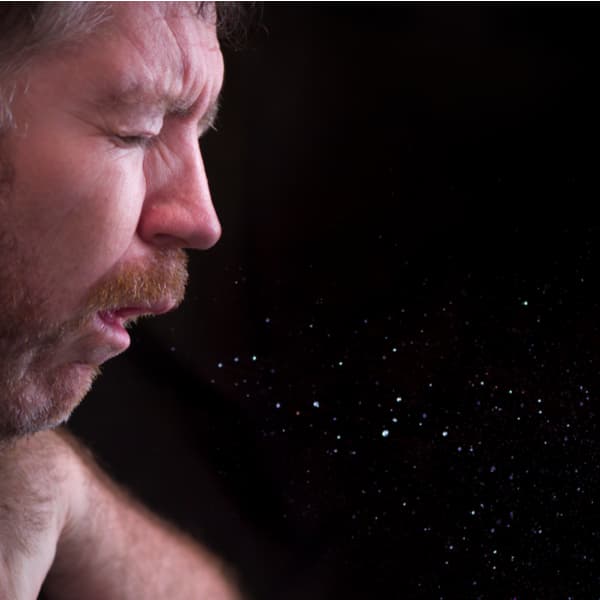You may have heard of foot and mouth disease in animals, but rest assured that hand, foot, and mouth disease in humans is completely unrelated! In fact, hand, foot, and mouth disease in humans is a very common childhood illness. It can present with very mild symptoms or more severe signs. At its mildest, it may not even be identified as hand, foot, and mouth disease and be simply considered an unknown viral illness such as children often get. Most children who experience hand, foot, and mouth disease recover quickly after a week to ten days with no lasting effects. It is possible for adults to get the illness, but it is much more common in children under the age of five.
What is Hand, Foot, and Mouth Disease?
Hand, foot, and mouth disease, or HFMD, is a viral illness that can be caused by a number of different viruses such as coxsackieviruses. It causes a range of symptoms that usually appear in a set order, but remember that each person is different and may experience a viral illness differently.
- The illness usually starts with a fever, which occurs a few days after a person is exposed to the virus. A high temperature is common in those with HFMD. This can lead to feeling generally unwell, with body aches, tiredness, loss of appetite, and sore throat.
- After a few days of fever, mouth sores typically appear. These usually start off small, like spots and then become more like blisters over a few days. They can be painful, and the patient might find it difficult to eat or drink depending on how many sores there are and how severe they are.
- Next, a rash may appear on the feet and hands. Like the mouth sores, this starts as red spots and then develops into fluid-filled blisters. When the blisters break or burst, they form scabs. Again, these may be uncomfortable or painful. The rash is sometimes mistaken for the rash associated with chickenpox (Varicella Zoster.) However, chickenpox tends to appear all over the body, whereas the rash associated with HFMD is usually limited to the hands and feet.
How Does HFMD Spread?

HFMD is extremely contagious and spreads very easily from child to child. It often spreads through siblings or through larger groups of children, especially in daycare centers, nurseries, and school settings. This is because there are larger numbers of children in these settings sharing toys and equipment. The virus is present in bodily fluids such as saliva, fluid from the blisters and scabs, and in feces. Spread is often caused by:
- Sharing equipment
- Skin to skin direct contact
- Droplets from coughs or sneezes
The condition is most contagious within the first week of the illness. In order to reduce the spread of the illness, it is important to keep children with the illness at home and not send them to educational settings or daycare. Try not to share equipment, utensils, or towels. Good handwashing practice is important. Washing equipment that is shared between people regularly is also important in keeping viral illnesses at bay.
Treating Hand, Foot, and Mouth Disease
If the condition is mild, there may be no recommended treatment other than resting and getting plenty of fluids. Most people get better within ten days without any medical intervention. Over-the-counter medication may help reduce a fever and ease pain; ask the pharmacist for the best fever-reducing medicine or pain relief choice for your child according to their age and any other medical requirements they might have.
However, if the illness is severe or there are complications, it is always best to seek medical advice. Any child with a reduced immune system who has symptoms of HFMD should be checked by a professional. You should also seek medical attention for younger children, especially infants under six months of age. If in doubt or concerned in any way, seek the advice of a doctor. You know your child best! If symptoms have not improved in a week to ten days, then it is best to speak to a healthcare provider and get advice.
Complications

Dehydration is always a risk in children with viral illnesses and in hand, foot, and mouth disease; this may be increased by the child not wanting to eat or drink while they have sores in their mouth. It is very important to encourage the child to drink plenty of water (cold water might be soothing to a sore mouth) and to watch out for signs of dehydration such as dark urine or no urine, dry mouth, no tears, dizziness, and lethargy.
In rare cases, HFMD can progress to more severe illnesses such as viral meningitis. If you are concerned about your childs symptoms or they are experiencing fever, stiff neck, sensitivity to light or are difficult to rouse (drowsy, lethargic, less responsive than usual), then seek immediate medical attention.
Hand, Foot, and Mouth in Adults
Symptoms and prognosis are much the same for adults as for children. The illness can occur more than once, so having it as a child does not mean you cannot catch it as an adult. Unlike some other childhood illnesses, the condition is not necessarily worse in adulthood; in fact, it tends to be worse in very young children and infants.
Avoiding HFMD

The best way to avoid catching viral illnesses that are contagious and spread via surfaces is to wash your hands for longer than 20 seconds with warm water and soap. Catching coughs and sneezes in tissue and binning it, then washing your hands well is the best way to stop the spread. Cleaning surfaces is a good way to cut down on transmission.
We cannot avoid all viruses, and this infection tends to move throughout the population, causing mild, short-lived illness. For those with compromised immune systems, it is important to know the signs and get personal advice from a healthcare provider who knows your medical history. Otherwise, plenty of rest and fluids are the key to recovery.

